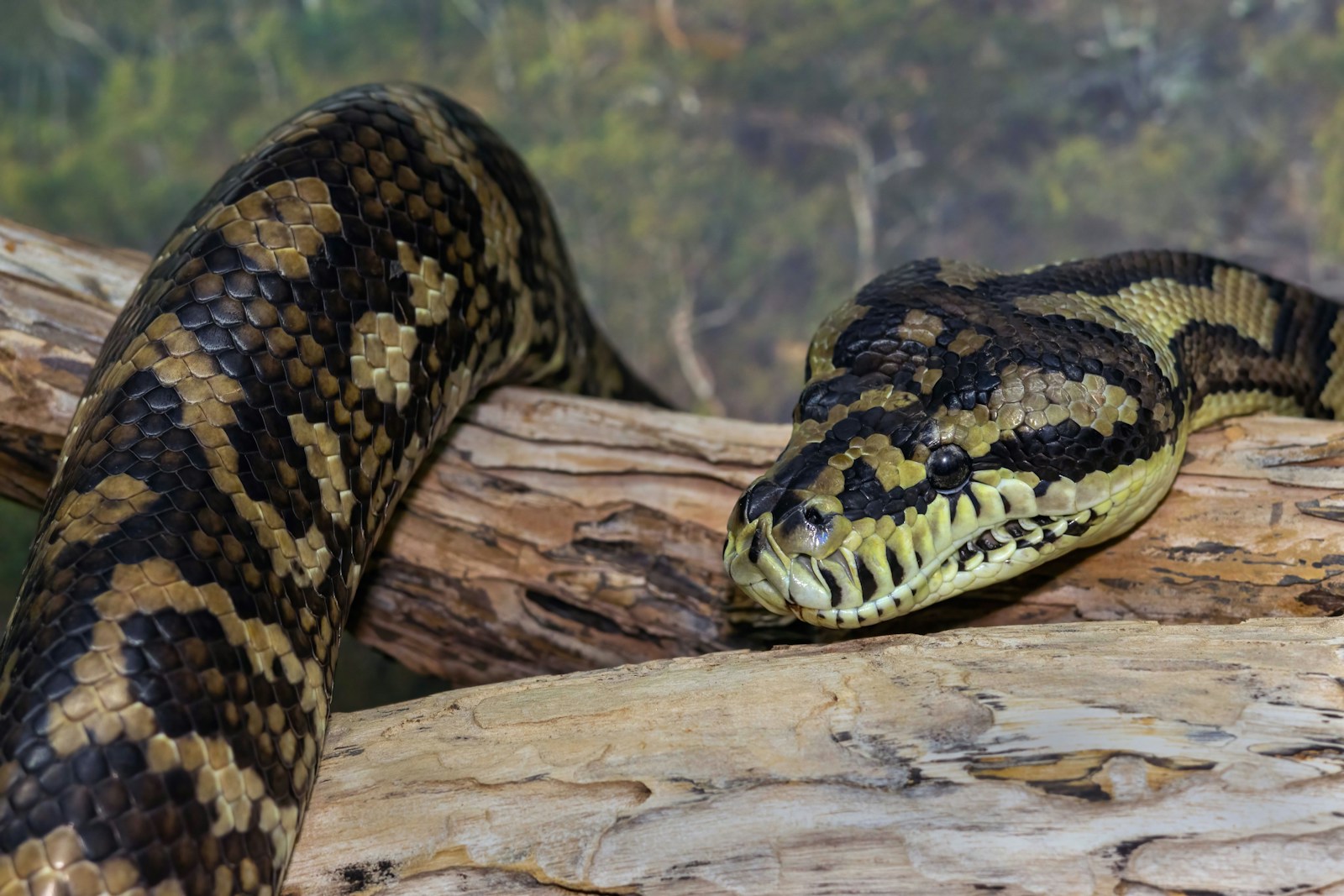Nature is full of fascinating behaviors that help creatures survive in a world filled with predators and competitors. Among these survival strategies, mimicry stands out as one of the most intriguing. Non-venomous snakes that vibrate their tails like rattlesnakes provide a perfect example of this evolutionary tactic. This behavior, known as “tail vibration” or “caudal luring,” is employed by various snake species around the world to deter predators by mimicking their more dangerous cousins. The phenomenon showcases the remarkable ways animals have evolved to maximize their survival chances without actually developing venom or other costly defensive mechanisms. Let’s explore why and how these harmless serpents put on such a convincing rattlesnake impression, and what this behavior tells us about the fascinating world of animal adaptation.
The Evolutionary Advantage of Mimicry
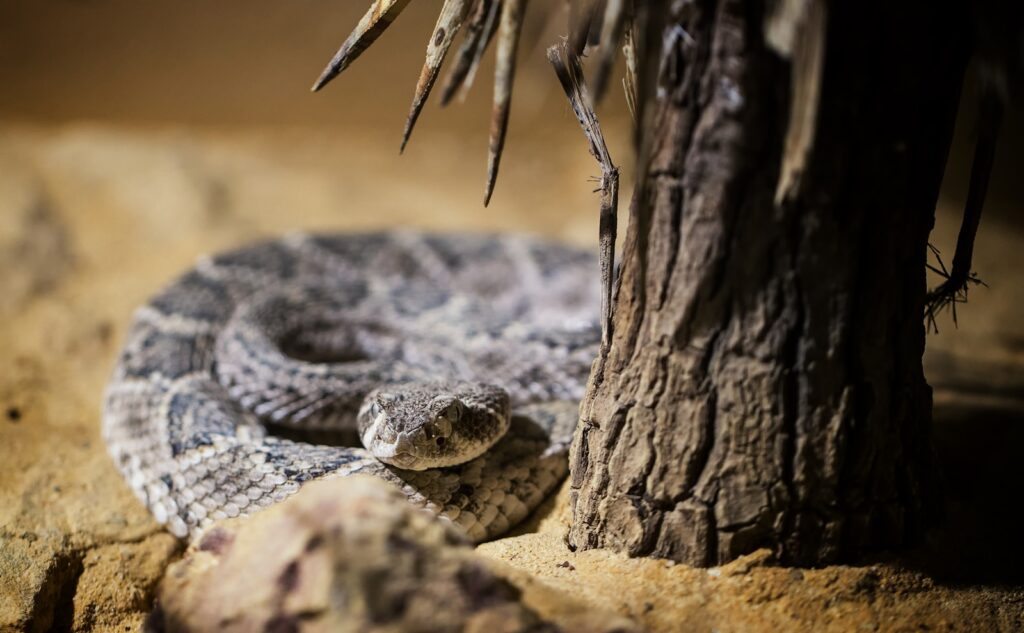
Mimicry represents one of evolution’s most elegant solutions to the survival challenge. In the case of non-venomous snakes vibrating their tails, we’re observing what biologists call Batesian mimicry – when a harmless species imitates a dangerous one to gain protection. This evolutionary strategy allows these snakes to benefit from the fearsome reputation of rattlesnakes without actually investing energy in producing venom. The strategy works because potential predators have learned through experience or innate behavior to avoid rattlesnakes and their distinctive warning signal. For the mimics, the evolutionary math is simple: if enough predators are fooled even temporarily, giving the snake time to escape, the behavior will be reinforced through natural selection. Over generations, individuals that perform more convincing tail vibrations would have higher survival rates, gradually perfecting this deceptive behavior.
Common Non-Venomous Tail Vibrators
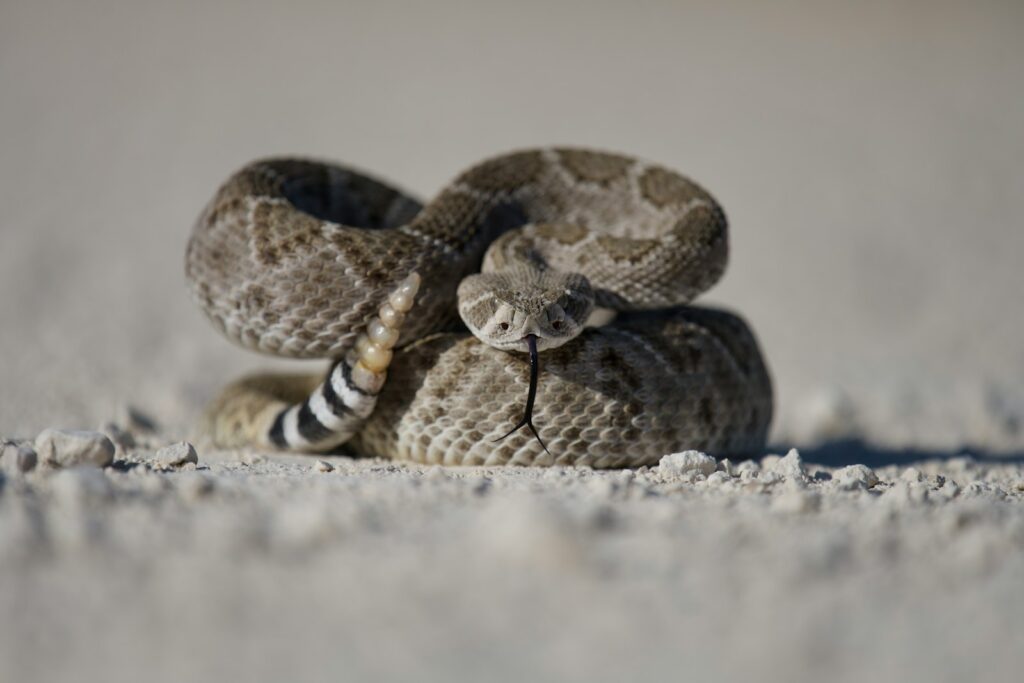
Several non-venomous snake species around the world have independently evolved tail vibration behaviors. The North American rat snakes (Pantherophis species) are perhaps the most well-known practitioners, with both eastern and western varieties demonstrating this behavior when threatened. Gopher snakes (Pituophis catenifer) are also accomplished tail vibrators, often combining this with flattening their heads to enhance their rattlesnake impersonation. In the eastern United States, the harmless hognose snake (Heterodon platirhinos) will sometimes vibrate its tail among leaf litter to create a rattling sound. Even some water snakes (Nerodia species) have been observed vibrating their tails when cornered on land. Interestingly, this convergent evolution has occurred in species that often share habitats with rattlesnakes, highlighting how shared ecological pressures can produce similar adaptive responses in unrelated species.
The Mechanics of Tail Vibration
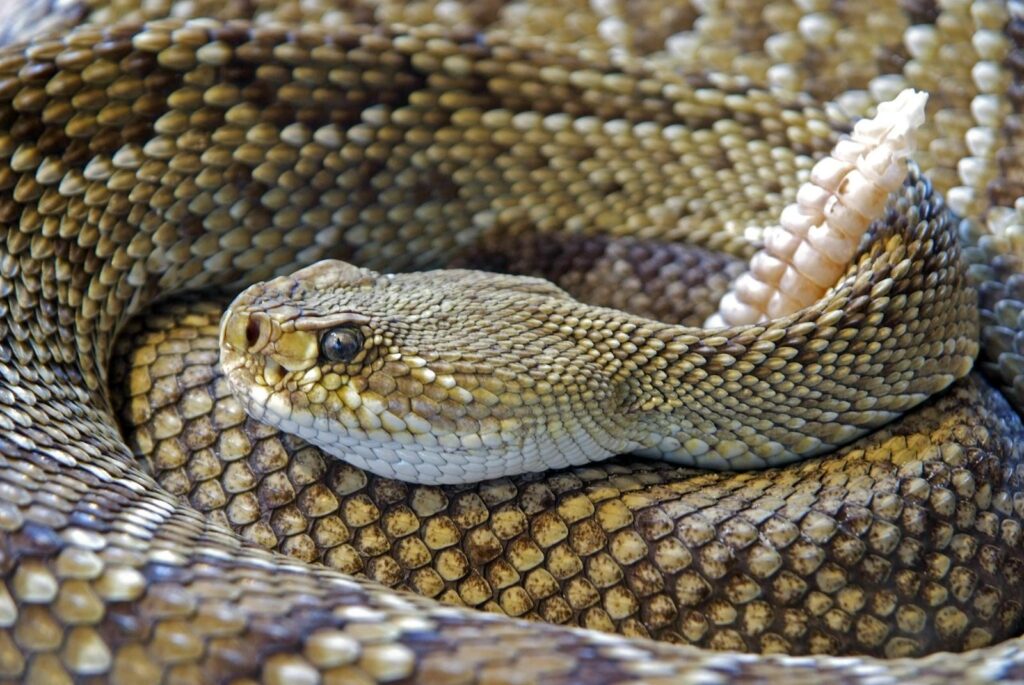
The physical process of tail vibration in non-venomous snakes involves rapid muscle contractions similar to those used by rattlesnakes, though without the specialized rattle structure. These snakes rapidly contract muscles along the posterior portion of their bodies, causing the tail to move back and forth at speeds of up to 30 vibrations per second. When performed against dry leaves, twigs, or other vegetation, this movement creates a buzzing or rattling sound that convincingly mimics a rattlesnake’s warning. The behavior requires significant energy expenditure, explaining why it’s typically used as a last resort when other defensive strategies have failed. Physiologically, the ability to sustain such rapid muscle contractions demonstrates specialized adaptations in muscle fiber composition and energy metabolism in these species. Some species have even evolved slightly flattened tail tips that enhance the sound production when vibrated against substrate material.
Environmental Factors Enhancing the Deception
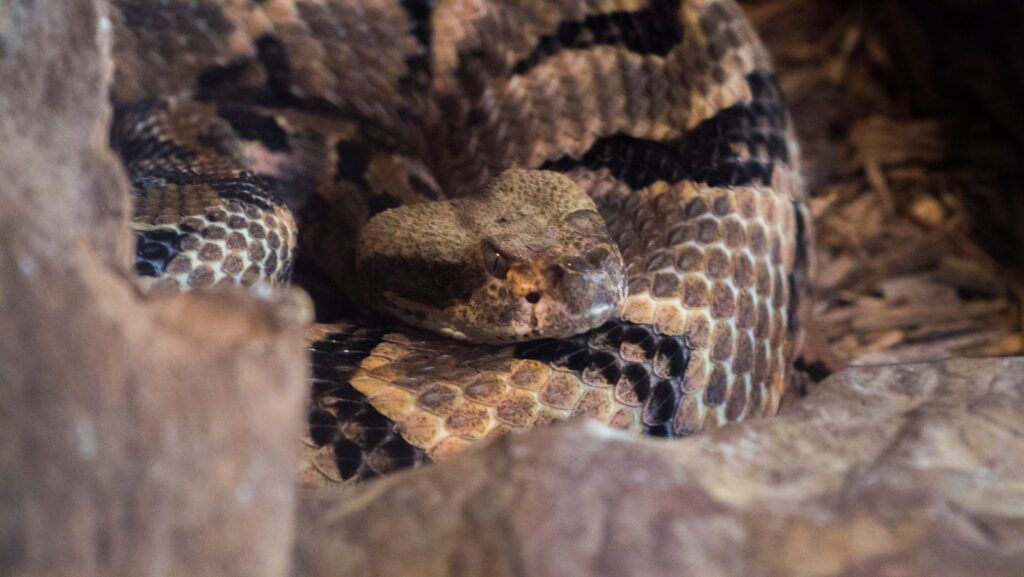
The effectiveness of tail vibration mimicry is often amplified by the snake’s environment. When a non-venomous snake vibrates its tail among dry leaves, grass, or other debris, the resulting sound bears a striking resemblance to a rattlesnake’s warning. This environmental amplification allows these mimic species to create a convincing auditory illusion without possessing an actual rattle structure. Seasonal changes also affect this behavior, with snakes more likely to employ tail vibration during warmer months when rattlesnakes are more active and predators are more conditioned to avoid their warning. Geographic variations exist as well; populations of non-venomous snakes that coexist with rattlesnakes tend to display more convincing mimicry than those in regions where rattlesnakes are absent. This environmental context demonstrates how ecology shapes the effectiveness and evolution of mimicry behaviors across different habitats.
Contextual Use of Tail Vibration
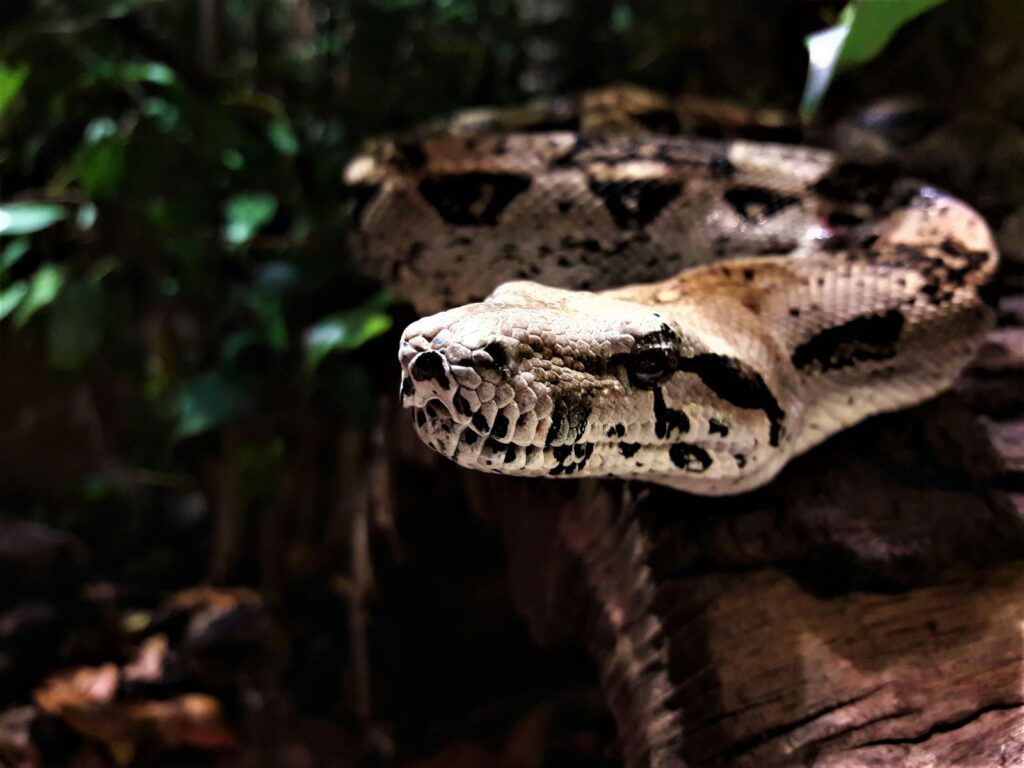
Non-venomous snakes don’t vibrate their tails constantly but employ this behavior selectively based on threat assessment. This behavior typically emerges as part of a graduated defense response when the snake feels threatened and unable to escape. The sequence often begins with freezing, followed by attempting to flee, and escalates to defensive displays including tail vibration if the threat persists. Researchers have noted that many species will only resort to tail vibration after other defensive strategies have failed, suggesting they conserve this energy-intensive behavior for situations of extreme danger. The context-specific nature of tail vibration indicates sophisticated threat assessment capabilities in these animals. Interestingly, individual snakes show variation in how readily they employ tail vibration, suggesting potential differences in temperament or learned behavior among members of the same species.
Effectiveness Against Different Predators

The tail vibration deception works with varying degrees of success depending on the predator encountering the snake. Mammals like coyotes, foxes, and badgers that rely heavily on auditory cues and have likely encountered rattlesnakes before tend to be more effectively deterred by the mimicry. Birds of prey, which hunt primarily by sight and may have less experience with rattlesnakes, might be less fooled by the sound alone but still hesitate when confronted with the complete defensive display. Domestic animals like cats and dogs often respond strongly to tail vibration, suggesting innate recognition of the warning signal even without prior experience. Human responses to these displays are particularly interesting – even experienced herpetologists report momentary hesitation when encountering a convincing mimic, demonstrating the powerful psychological impact of these warning signals across species. This varying effectiveness against different predators may explain why the behavior persists even when it doesn’t always succeed.
Juvenile Snakes and Tail Vibration
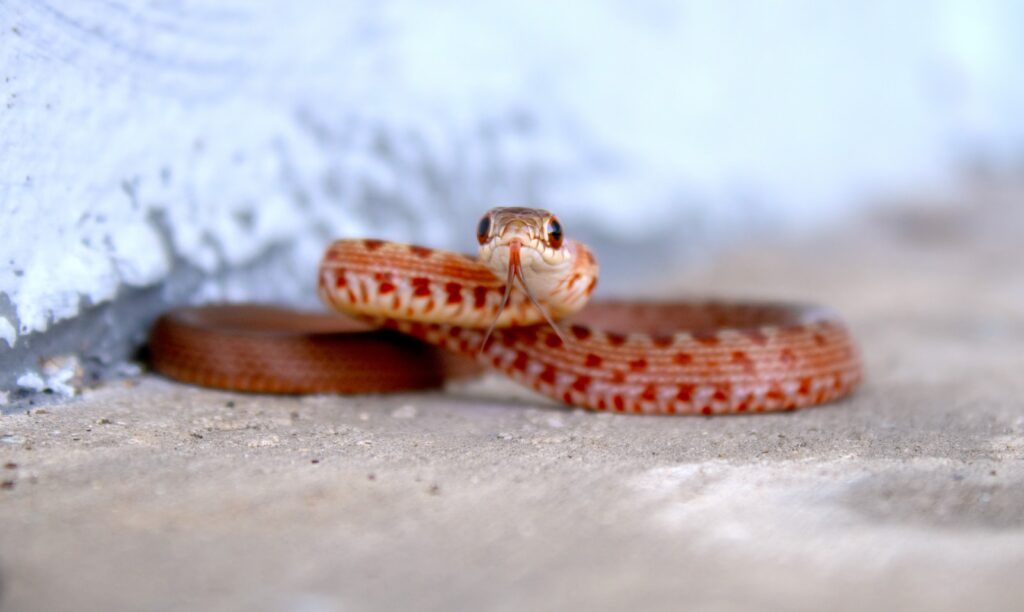
Young non-venomous snakes often exhibit more pronounced tail vibration behaviors than adults of the same species. This heightened defensive response makes evolutionary sense, as juvenile snakes are more vulnerable to a wider range of predators due to their smaller size. Researchers have observed that in some species like rat snakes, nearly all juveniles will vibrate their tails when threatened, while only a portion of adults maintain this behavior. The tail vibration in young snakes is typically more rapid and sustained, perhaps compensating for their less impressive size when trying to deter predators. Some species even display bright or contrasting coloration on their tail tips as juveniles, enhancing the visual component of this defensive display. This age-related difference in defensive behavior highlights how vulnerability shapes the expression of mimicry behaviors throughout a snake’s life cycle.
Geographic Variation in Mimicry Quality
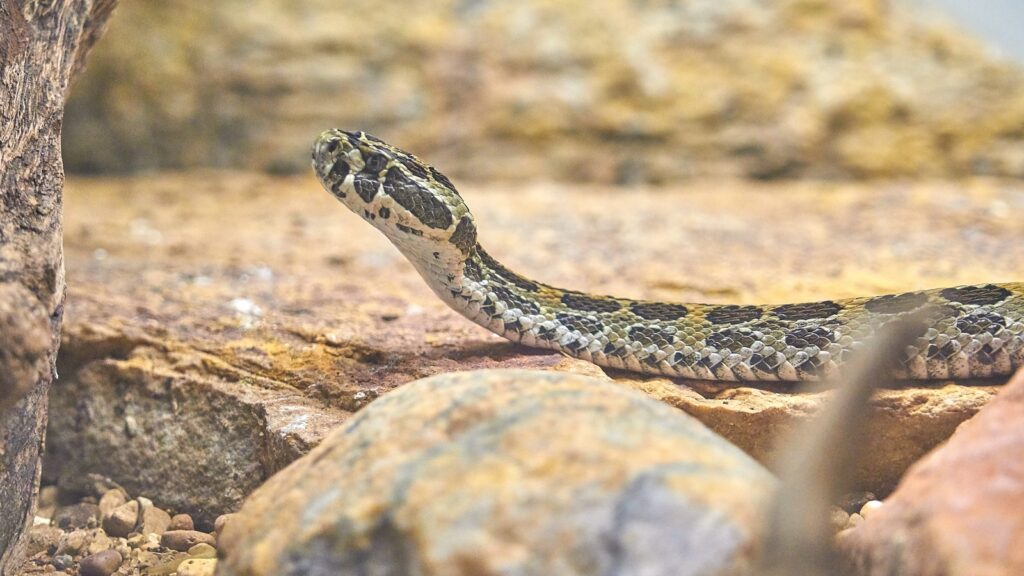
The quality and prevalence of tail vibration behavior shows fascinating geographic patterns that support evolutionary theory. Non-venomous snake populations that coexist with rattlesnakes typically display more convincing mimicry than populations of the same species in rattlesnake-free areas. For example, rat snakes in the southern United States, where rattlesnakes are common, often perform more vigorous and sustained tail vibrations compared to their northern counterparts where rattlesnakes are scarce or absent. This pattern, known as a mimicry gradient, provides compelling evidence for the role of natural selection in shaping this behavior. Over generations, predation pressure would favor more convincing mimics in areas where predators regularly encounter the dangerous model (rattlesnakes), while in areas without this reinforcement, the behavior might become less pronounced or even disappear. These geographic variations create natural experiments that help scientists understand how defensive mimicry evolves and persists in different ecological contexts.
Beyond Vibration: Complete Rattlesnake Mimicry

Many non-venomous snakes combine tail vibration with other defensive behaviors to create a more complete rattlesnake impersonation. Species like gopher snakes and pine snakes will flatten their heads to appear more triangular, mimicking the distinctive head shape of pit vipers. They may also hiss loudly, inflate their bodies to appear larger, and adopt the classic S-shaped striking posture associated with rattlesnakes. Some species even modify their typical locomotion, moving in the jerky, rectilinear fashion characteristic of rattlesnakes rather than their usual smooth gliding movement. This comprehensive mimicry package demonstrates that selection has favored not just the imitation of the rattle, but a complete sensory deception that targets visual, auditory, and behavioral cues recognized by predators. The integration of multiple mimicry elements creates a more convincing overall deception, increasing the likelihood that potential threats will retreat rather than attack.
Evolution of the Behavior
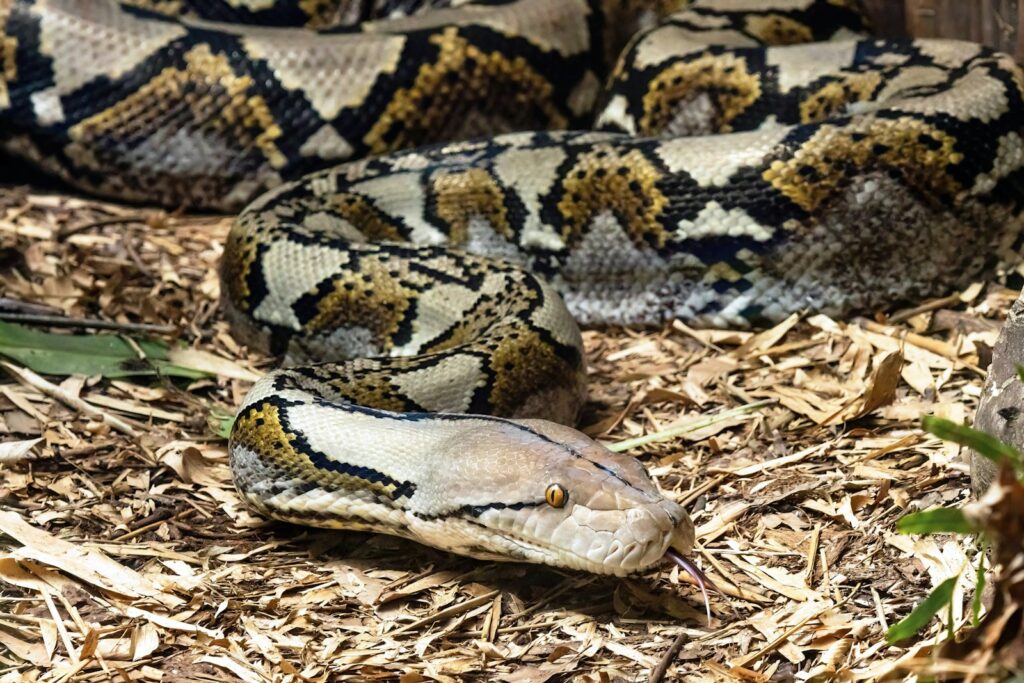
The evolution of tail vibration behavior in non-venomous snakes offers a fascinating window into how defensive adaptations develop. Evolutionary biologists believe the behavior likely began with random tail movements during stress or fear responses that coincidentally resembled rattlesnake behavior. Predators that had previously encountered dangerous rattlesnakes would have avoided snakes displaying these movements, creating selection pressure favoring individuals that more clearly expressed the behavior. Over many generations, this process refined the behavior to more closely match the rattlesnake’s warning signal. The fact that tail vibration has evolved independently in multiple snake lineages worldwide (convergent evolution) underscores how effective this strategy is for survival. Genetic studies suggest that while the basic ability to vibrate the tail may be widespread in snakes, the specific neural circuits and muscle adaptations that allow for sustained, rapid vibration likely evolved separately in different groups, representing distinct evolutionary solutions to the same defensive problem.
Human Interactions and Misidentifications
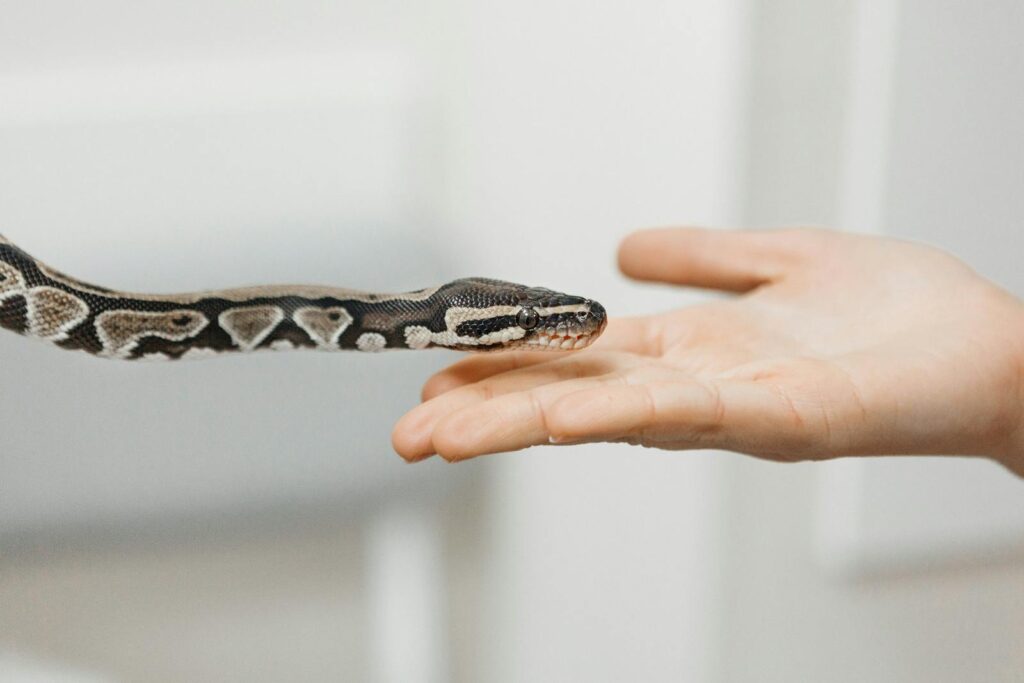
The convincing nature of tail vibration mimicry frequently leads to misidentification by humans, sometimes with unfortunate consequences. Many harmless snakes are killed each year because people mistake their defensive displays for those of dangerous rattlesnakes. Conservation organizations regularly work to educate the public about how to distinguish between venomous and non-venomous species beyond just the tail-vibrating behavior. For outdoor enthusiasts, understanding this mimicry can prevent unnecessary fear and potentially harmful reactions to harmless snake encounters. Experts recommend focusing on multiple identification features rather than just defensive behavior – including head shape, pupil shape, and the presence of heat-sensing pits between the eye and nostril that are found in rattlesnakes but absent in their mimics. These efforts to improve human-snake relationships highlight the practical importance of understanding mimicry behaviors in conservation and public safety contexts.
Predators Learning to Distinguish Mimics
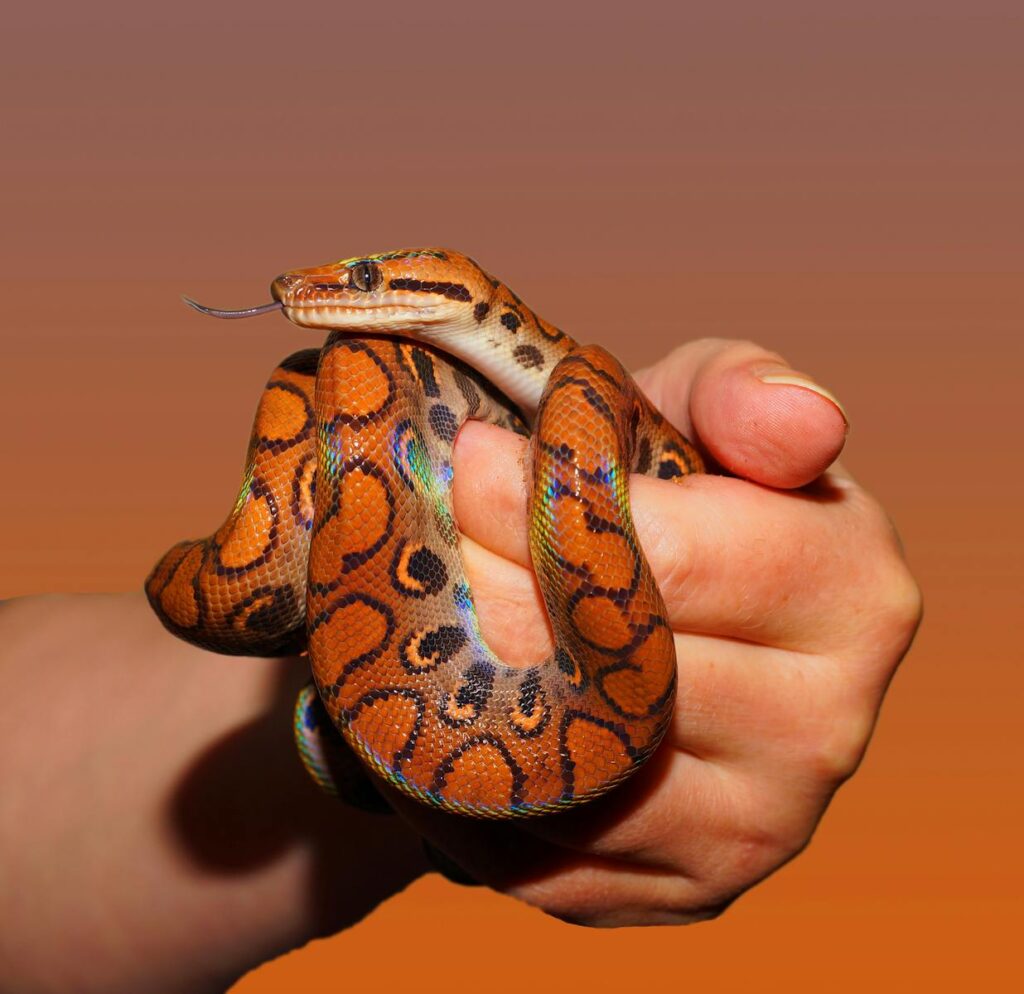
While mimicry is an effective defensive strategy, it exists within an evolutionary arms race where predators also adapt and learn. Research suggests that experienced predators can sometimes learn to distinguish between genuine rattlesnakes and their non-venomous mimics. This discrimination might be based on subtle differences in the sound quality, associated behaviors, or other cues that betray the mimic’s true identity. However, even imperfect mimicry provides significant advantages if it causes predators to hesitate or proceed with greater caution. The effectiveness of mimicry depends partly on the relative abundance of the model (rattlesnakes) and the mimics in a given area – a principle known as frequency-dependent selection. When rattlesnakes are common, predators are more likely to avoid anything resembling them, but if mimics become too abundant, predators may learn to ignore the warning signal, reducing its protective value. This dynamic relationship between predators, dangerous models, and harmless mimics creates ongoing evolutionary pressure that continues to refine mimicry systems over time.
Conservation Implications

Understanding tail vibration mimicry has important implications for snake conservation efforts worldwide. Non-venomous snakes are essential components of healthy ecosystems, controlling rodent populations and serving as prey for larger predators. Unfortunately, the very defensive behaviors that help protect them from natural predators often lead to persecution by humans who mistake them for venomous species. Conservation education programs increasingly focus on teaching people to appreciate the sophisticated adaptations of these harmless mimics rather than responding with fear. Some organizations have developed innovative public outreach campaigns that highlight the “bluffing” behaviors of non-venomous snakes as examples of nature’s ingenuity rather than reasons for concern. For species already facing threats from habitat loss and fragmentation, reducing human-caused mortality through better understanding of defensive behaviors can make a significant difference to population viability. The story of tail vibration mimicry thus becomes not just a fascinating biological phenomenon but also a valuable tool for promoting more positive human-wildlife relationships.
Conclusion

The tail vibration behavior of non-venomous snakes offers a remarkable window into the evolutionary processes that shape animal adaptations. Through Batesian mimicry, these harmless serpents gain protection by copying the warning signals of dangerous rattlesnakes, creating a convincing illusion that can deter predators long enough for escape. The behavior varies across species, geographic regions, and individual life stages, demonstrating how natural selection fine-tunes defensive strategies to match specific threats and environments. While not foolproof, this mimicry represents an elegant evolutionary solution that allows these snakes to survive without investing in costly venom production. Next time you encounter a snake vibrating its tail, take a moment to appreciate this sophisticated survival strategy – a perfect example of nature’s endless creativity in the face of predation pressure.

